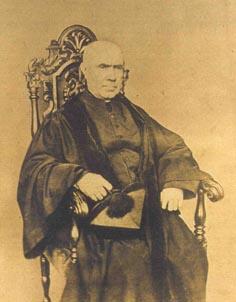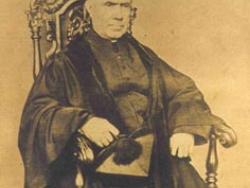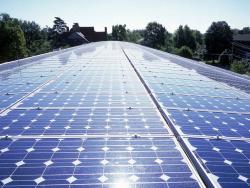The discoveries of electricity in the latter half of the 18th Century, and its close connection with magnetism, were the products of earlier experiments, which in turn led to the invention of the electric telegraph. Telegraphy had connected the interior of the United States, and it also connected Europe together. However, connecting the Americas and Europe proved to be a challenge. Due to the electric current that ran through the cable lines, insulation and waterproofing was necessary.
Electrical

YearAdded:
Image Credit: Courtesy IEEEImage Caption: The County Kerry Cable StationsEra_date_from: 1866
2000

In 1954 three researchers at Bell Laboratories published the results of their discovery of the world’s first practical ‘photovoltaic’ (henceforth abbreviated by ‘PV’) cell which was capable of converting sunlight into electricity, first at 4% and later at 6% conversion-efficiency[1]. In 1959 Sharp Corporation began R&D of silicon monocrystal PV-cells, with mass production starting in 1963[2], and commercialized a variety of mono/multi-crystalline PV-cells for everything from satellites to lighthouses, and industrial applications to residential use[2].
Studies on the feasibility of building a hydro plant in the site were initiated in 1893. The increasing need for power that was cheaper and easily adapted to mine underground use drove the Lota coal mine company to develop a study of alternatives for this purpose. Engineer William E. Raby traveled to the United States and Europe to assess the use of electricity generation and transmission. The availability of the Chivilingo hydro resources arose as a better alternative to a steam plant.
YearAdded:
Image Credit: Courtesy Wikicommons/B.diaz.cImage Caption: The Chivilingo Hydroelectric Power Plant was the first in Chile and only the second in South America. Era_date_from: 1897
2001

A pioneer in the development of electrical science, Nicholas Joseph Callan was born on 22 December 1799 in Darver, Ireland. He started the priesthood at Navan Seminary, and continued his studies at St. Patrick’s College Maynooth, where he studied natural and experimental philosophy under Dr. Cornelius Denvir. After his ordination as priest in 1823, Callan pursued his doctorate in divinity in Rome, where he became acquainted with Galvani and Volta’s work in the study of electricity, and recognized the potential to put it to practical and commercial use with powerful batteries.
Innovations

A pioneer in the development of electrical science, Nicholas Joseph Callan was born on 22 December 1799 in Darver, Ireland. He started the priesthood at Navan Seminary, and continued his studies at St. Patrick’s College Maynooth, where he studied natural and experimental philosophy under Dr.… Read More
Studies on the feasibility of building a hydro plant in the site were initiated in 1893. The increasing need for power that was cheaper and easily adapted to mine underground use drove the Lota coal mine company to develop a study of alternatives for this purpose. Engineer William E. Raby traveled… Read More

In 1954 three researchers at Bell Laboratories published the results of their discovery of the world’s first practical ‘photovoltaic’ (henceforth abbreviated by ‘PV’) cell which was capable of converting sunlight into electricity, first at 4% and later at 6% conversion-efficiency[1]. In 1959 Sharp… Read More

The discoveries of electricity in the latter half of the 18th Century, and its close connection with magnetism, were the products of earlier experiments, which in turn led to the invention of the electric telegraph. Telegraphy had connected the interior of the United States, and it also connected… Read More


